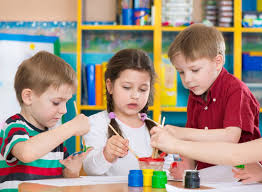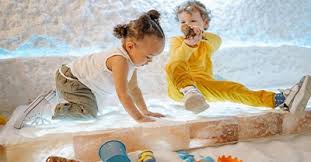Introduction and Importance in Facilitating Creativity
An integrated curriculum that combines STEM (Science, Technology, Engineering, and Mathematics), STEAM (including Art), STREAM (including Reading), and STEMIE (including Entrepreneurship) is vital for developing well-rounded, creative thinkers. These interdisciplinary approaches allow children to make connections between different subject areas and understand how they work together in the real world. According to Lange (2019), integrating subjects encourages children to think creatively by seeing how different fields of knowledge intersect. By combining these subjects, educators can help children develop the skills they need to think critically, innovate, and solve complex problems skills that are essential for future success. Through hands-on activities, children get the opportunity to engage with the world in meaningful ways, making learning more relevant and stimulating (Howard & Mayesky, 2022).
Creativity Theories and Perspectives
The integration of STEM, STEAM, STREAM, and STEMIE fosters creativity by encouraging children to think across disciplines. Vygotsky’s theory of social learning is particularly relevant here, as collaboration between different fields allows for the sharing of diverse ideas, fostering innovative thinking. Fleer and Raban (2016) highlight that combining subjects like art with science or technology with reading allows children to approach problems from multiple perspectives, encouraging creativity. This interdisciplinary approach helps children build connections between knowledge areas and see the bigger picture, which enhances creative problem-solving.

Resources, Materials, and Digital Technologies
Integrated curricula rely on a variety of materials that can bridge the gaps between different disciplines. Building blocks, simple robots, digital design tools, and art supplies help children combine science, engineering, art, and mathematics in their learning. For example, apps like ScratchJr allow children to code stories, combining art with technology and literacy. According to Knaus and Roberts (2017), using digital tools alongside physical materials allows children to experiment and see the results of their ideas, which fosters creativity. These resources encourage children to think critically, collaborate, and experiment, enhancing their problem-solving and creative abilities across disciplines.
Learning Experiences
0–2 years: Children engage with interactive toys that combine sounds and textures, exploring basic STEM concepts through sensory play (Howard & Mayesky, 2022).
2–3 years: Children use blocks to build structures, exploring engineering and math concepts like shape, symmetry, and balance (Lange, 2019).
3–5 years: Children combine art with technology, using apps to create digital art or simple animations, integrating creativity with learning (Knaus & Roberts, 2017).
6–8 years: Children collaborate to design and build a simple machine using digital tools and physical materials, combining math, engineering, and art (Fleer & Raban, 2016).
Critical Reflection and Evaluation
The interactive toy activity for toddlers (2–3 years) was effective in stimulating sensory exploration, but some children struggled to manipulate the toys. For next time, I would choose simpler toys and demonstrate how to use them before letting the children explore. The collaborative machine building project for children aged 6–8 was fantastic for promoting teamwork and creativity. However, some groups had trouble managing their time and resources. In future projects, I would introduce more structured planning time and clearer task delegation to help children manage their projects more effectively.

